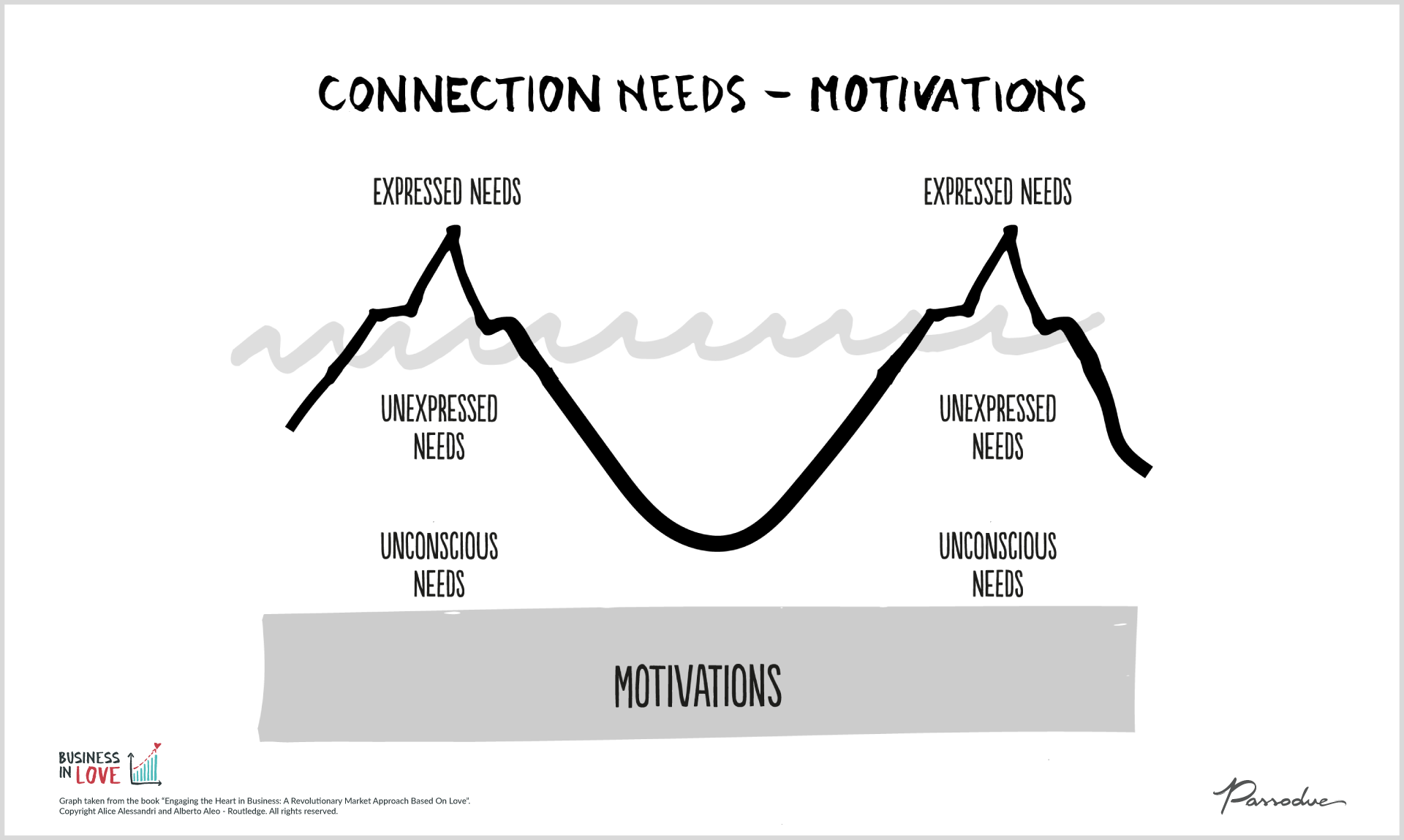by Alberto Aleo
In the ever-changing world of marketing, there are thousands of technical terms, acronyms and neologisms that often designate particular tools and fields of application. It is impossible, perhaps even a little useless, to know them all. However, some of them are really worth investigating and these certainly include Up-selling and Cross-selling: two of the most powerful tools to increase sales results. Let’s learn more about them.
The different challenges of growth
If you have ever asked yourself the question “what is the best way to increase my business results?” and you have struggled to find an answer, be aware that – in our opinion – there are only 4 choices to increase your turnover. These depend on the type of objectives and strategies that are going to be used. Here they are:
- If we want to grow horizontally, which implies finding new customers to sell to by using an outbound mode, i.e. by taking the initiative, we will have to activate so-called direct contact tools, such as email and telephone but we will also need to push on salesforce and distribution system
- If, on the other hand, we want to stimulate new customers to take the initiative by visiting us or by contacting us (inbound), we should work to increase and improve the touchpoints, e. the interactions that can create business opportunities
- If we decide to try to sell more to the customers we already have, by adopting a vertical growth strategy, and we want to stimulate them directly, it is a matter of proactively offering consultancy
- Last but not least, we can choose to transform the occasions when our customers ask for support/assistance, or even contact us with a complaint, into new opportunities, by working on customer care.

What does all of this have to do with Up-selling and Cross-selling? Let’s try to close the circle.
Explicit and implicit needs
However you have approached the customer, remember that, during the needs analysis stage, there are explicit and implicit needs and intangible purchase motivations which, although undeclared, play a fundamental role in his/her satisfaction. For example, if I buy a hammer in your shop I might not know or not remember that I also need nails. Sometimes customers are even afraid to express their needs in full, in case the sellers use their requests to their advantage. They might even take for granted that “if I buy a hammer, the nails will be included”: in this case the need is not expressed clearly, but the customer expects it to be fulfilled anyway.

This is when the seller’s ability to fully intercept the needs and propose different offer elements is fundamental, not only to increase turnover but also to ensure customer satisfaction. This is exactly what Up-selling and Cross-selling are for!

The first case, i.e. Cross-selling, implies offering something complementary as in the example of the hammer and the nails; in the second case we offer something of a higher level or in greater quantities. If you are in a hotel and they offer you a suite instead of a standard room, they are using Up-selling. The same goes if someone offers you to buy a larger quantity in order to obtain advantages. How do you know when it is better to use one technique or the other?
Up-selling vs Cross-selling
Although closely related, these two tools have significant differences that make each of them preferable in certain situations.
In order to be applied effectively, Up-selling requires a strong relationship of trust between customer and seller.
Buying something more expensive or in greater quantities means relying on the advice of the supplier in the hope that he/she is not only trying to maximize his/her interest but really believes that this is the best solution for us. Therefore it will be difficult to use this technique with a new client or with a customer who has had some previous difficulties with us. From the seller’s point of view, Up-selling is more than just a way to raise margins by selling something more expensive; it is also a means to make clients experience a superior quality of service which best expresses all the value his/her company can offer. If used well, this tool increases customer loyalty and improves the customer-seller relationship. Promotions and campaigns can be built using the Up-selling technique, replacing discounts with product or service upgrades.

Photo by Benedikt Geyer on Unsplash
Cross-selling, on the other hand, is the perfect tool to use with those somewhat lazy customers who always buy the same items and don’t take the risk of experimenting other elements in our range.
It goes without saying that in order to use this tool we need to have a wide range of products/services that allows us to broaden our offer, providing a complete consumer experience. On the customers’ side, buying everything they need from a single supplier is a huge simplification. The more products and services the company can offer to its clients, the less replaceable it will become.
Just think of Apple: if it only produced excellent phones, not populating customers’ lives with a myriad of other electronic items, it would be easier to switch to another brand. However, try to replace your Iphone with an Android phone when you also have an Ipad, Mac and some other gadget with the Apple logo at home! Cross-selling can also be used for promotional purposes, creating combined product packages or taking advantage of the customer’s propensity to residual purchasing i.e. to “adding to the cart” some other useful items if the amount to be added is relatively small.

Photo by Bruno Kelzer on Unsplash
Selling to a customer we already have is less expensive, both in relational and in absolute terms. Statistics show that the commercial costs are reduced from 3 to 6 times depending on the sector in which we operate.
– – –
That’s why Up-selling and Cross-selling are more effective when we use them in vertical growth strategies, and especially when we offer advice to a previously acquired client (lower left quadrant of the diagram above).
– – –
So remember to use these techniques to the fullest whenever the opportunity arises. You will do a favour to yourself but also to your customer.
| partem claram semper aspice |
Want to learn more?
Register for free in the My Passodue reserved area.
You will have access to a dedicated video where you will find further examples and tips to make the best use of Up-selling and Cross-selling!
>> Register in the MyPassodue area to watch the video
The photos used - where not owned by the editorial team or our guests - are purchased on Adobe Stock and IStockPhoto or downloaded from platforms such as UnSplash or Pexels.
Did you like this post and want to learn more about the topics?
Passodue research on issues related to sales, marketing, ethics and the centrality of human beings within the market logic, officially started in 2012. The results derived from our work are described in the publications and in the books you can find in this section.






This Post Has 0 Comments